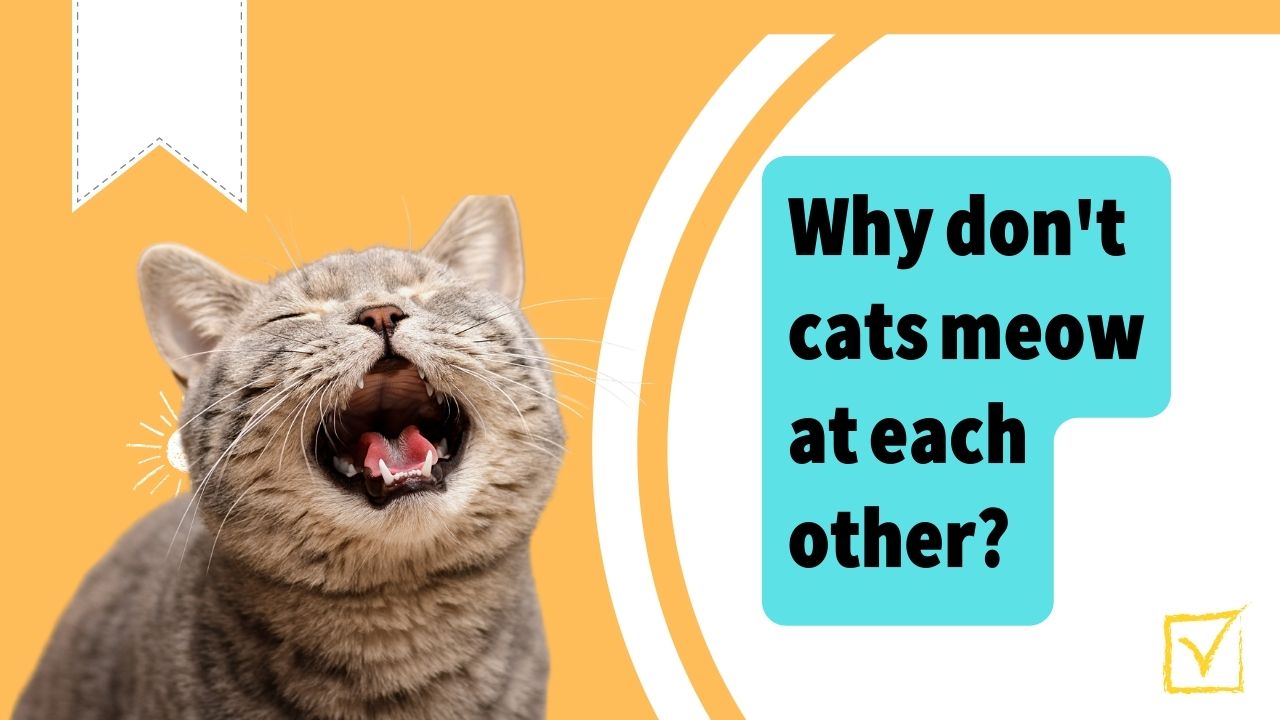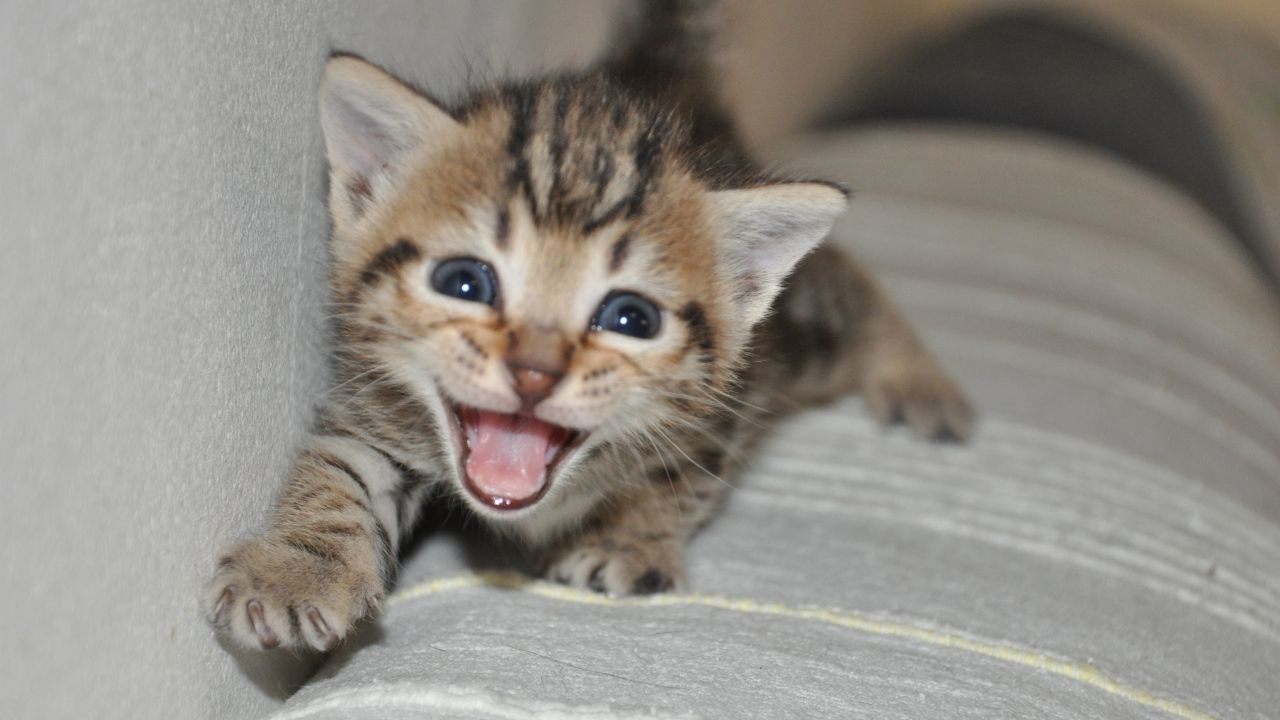
Have you ever wondered why cats don’t meow at each other? How do they communicate with each other when they’re just standing around? Have you ever noticed that cats meow more to humans than they do to each other? The fact that cats meow to us and not to each other might seem odd, but there are a few reasons. Let’s look at 10 possible reasons cats don’t meow at each other.
1. The Physical Reason
Scientists have long believed that cats’ soft meows resulted from their lack of oral structures and sound production mechanisms. But research has found that cats have most of these mechanisms; they don’t use them in cat-to-cat communications. This might explain why domestic cats will almost always meow to their humans when they want something but rarely make any other noises to each other (at least, not on purpose). If your cat wants something from you, chances are it’ll be hard for them to get your attention otherwise. Because of that extra need for communication, cats might have become used to vocalizing with humans.

2. The Emotional Reason
It’s been said that cats meow as a way to talk to humans because they know humans can understand them. It makes sense, but it also creates a problem. If talking to us is their primary purpose, then there would be very little reason for a cat to talk to another cat. After all, who else could understand what they are saying? In most cases, we don’t even realize when our cats are trying to communicate with us, so why would they even bother trying in front of other cats? Because of that unique characteristic, we have evolved and trained our feline companions (and countless others) over time into thinking that it’s normal for them not to speak when around other felines.
3. Less Competition
While there are a ton of potential reasons why cats don’t meow at each other, one that doesn’t get as much attention is that feline communication is just not as highly developed as canine communication. Dogs have been bred over thousands of years to communicate with humans. They can track our hand and facial movements, detect subtle changes in tone and pitch, and interpret our verbal commands from a word to a phrase to even entire sentences. This means that canines have developed sophisticated ways of communicating with each other.

4. More Direct Communication
While cats communicate with one another, it’s mostly through body language. They have scent glands all over their body, so they rub against each other to leave their scents on one another and establish a social hierarchy. Their tails also play a significant role in communication. A raised seat is a friendly greeting between two cats who know and trust each other.
5. A Lack of Status Symbols
Unlike dogs, who can communicate status through their size (the bigger they are, generally speaking, the higher their social rank), cats do not have a social system based on size. Status among cats isn’t determined by physical attributes like paws or coat color but rather by an individual cat’s aggressiveness and confidence. When cats want to call attention to themselves and demand respect from others, they’ll start rubbing against objects to scratch up a scent mark. Your cat might rub up against your ankles to show you that he wants more food; another cat might rub against your legs when he sees you eating, so he gets some more tuna too. But it’s not all about dominance—cats also use these marks as indicators of affection and connection.

6. The Semantics Of Purring
It’s sometimes hard to believe that cats have a language all their own, considering that they cannot form words to communicate their thoughts. But much like people, they convey their feelings and desires through tone of voice. This is why cats are famous for purring—it’s what they do when they’re happy. Of course, they also purr as a form of communication with each other—you’ll often hear multiple cat family members purring at once. By listening to your cat’s unique purr (every cat has one), you can tell if they are under stress or in pain by taking note of how high-pitched it is.
7. Selfishness
The best explanation for why cats don’t communicate with each other verbally is simply that they’re too selfish. Kittens may be cute and playful, but they’re still essentially feral animals and tend to act in their own best interests at all times. Most adult cats are also just as independent. You might notice your cat trying to convince another cat to play when you bring it home, but even then, they will generally only have eyes for its toys and territory – not yours!

8. Cats are solitary animals
Unlike many of their feline cousins, domestic cats are not inclined to form close social bonds. As a result, they have evolved different ways of communicating with other species members. Domestic cats do not readily meow at one another, but they are known to communicate in various ways, including yowls, hisses, purrs, and growls (the little chirps that sound like hello). Different cat breeds may have slightly different communication patterns based on how isolated from humans they were during their development. However, it’s been shown that species don’t have much difference in how often they vocalize.
9. Territorial Behavior
While cats will talk to each other, they rarely meow at each other. If you’re a cat owner, then you know that meowing is your kitty’s way of telling you he needs something or wants something. Most cats are territorial and often remain silent when marking their turf and defending their territory. They aren’t talking because there’s no need to; just looking at a cat tells another cat what she wants or means. This is also why a dominant cat might not allow other cats into his territory—and why some people get two cats, but only one tolerates having another feline in their home.

10. Not All Meowing Is Created Equal
Experts note that cat meows are different than dog barks. Though they can be considered a form of communication, they aren’t used in quite the same way. Dog barks tend to be directed at specific things and people, while cats’ meows are usually meant to gain attention or let another kitty know where they are (i.e., I am right here, see me!). That said, it’s worth noting that not all cat meows are created equal—they can mean many things depending on how it is delivered.


